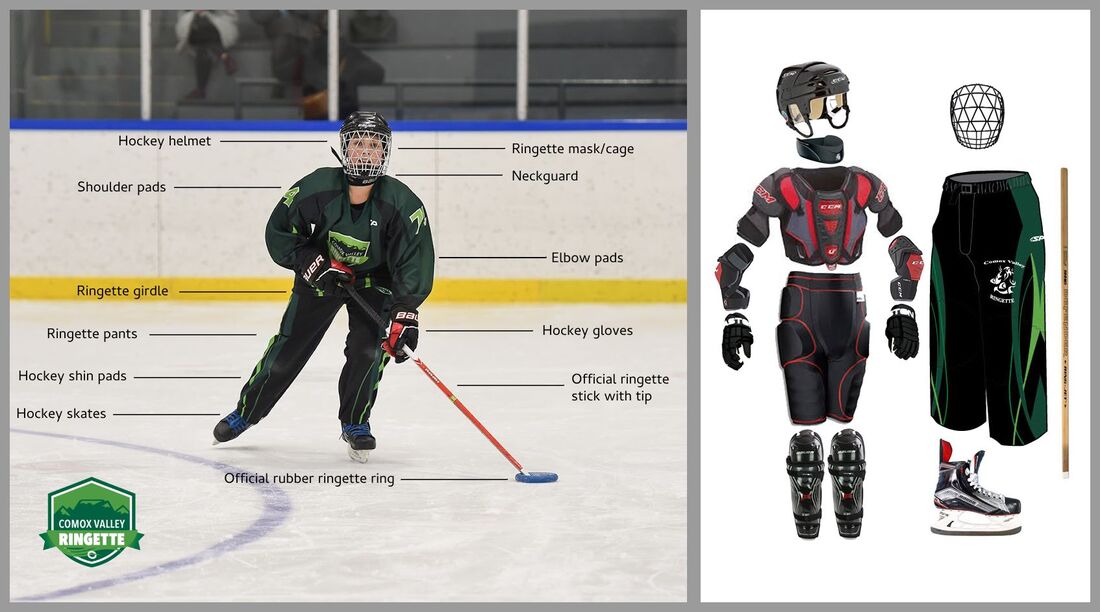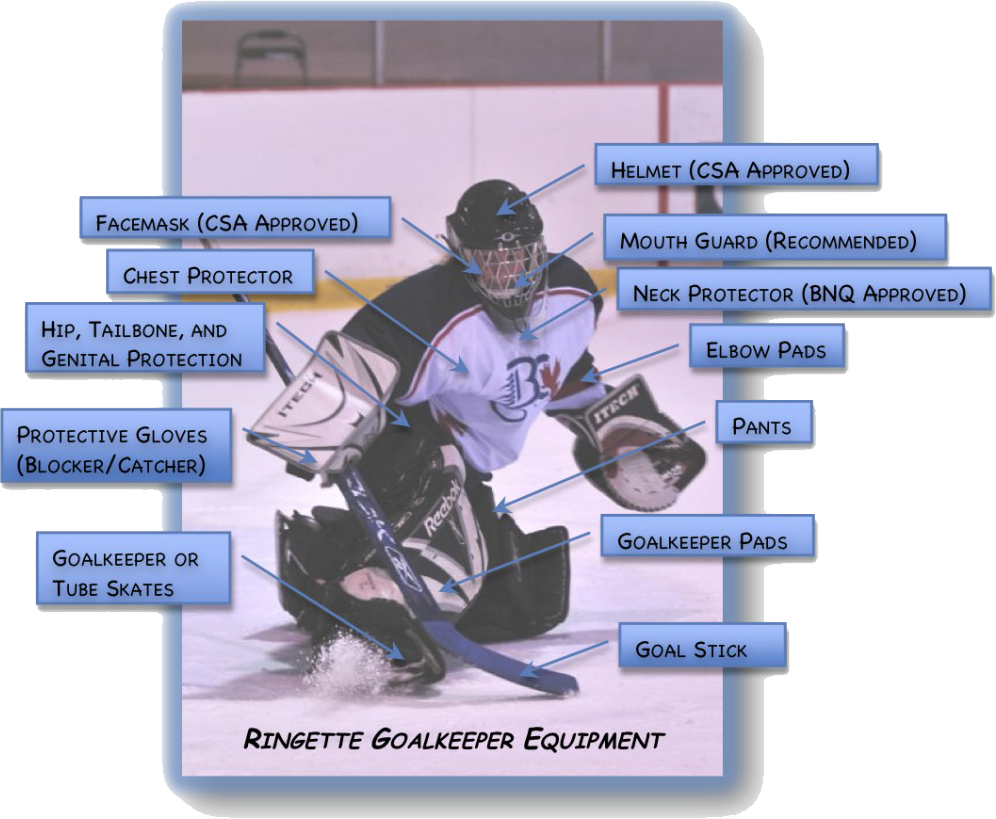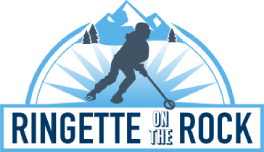Ringette is a fast-paced ice sport introduced in 1963 in North Bay, Ontario by Sam Jacks. Originally developed for girls, Ringette is played with a straight, tapered stick used to pass, carry, and shoot a rubber ring with the object being to score goals.
Ringette is played throughout Canada at many different levels, from house league to all-stars and in national and international competition. In Canada, 50,000 athletes, coaches, and officials call Ringette their sport. BC has approximately 2,200 registered players most of which participate in the Lower Mainland Ringette League. Ringette is also played internationally in Finland, Sweden, United States, and has been introduced in many other countries.
The greatest difference between Ringette and hockey is that the obstruction and interference that routinely occurs in hockey is prohibited in Ringette, instead requiring the player to use skill and speed in checking the opponent, resulting in a fast-skating, highly-skilled passing game.
Need to see it to believe it?
Here is a 5 minute video from Ringette Canada that explains everything from the rules to what to wear.
Ringette is played throughout Canada at many different levels, from house league to all-stars and in national and international competition. In Canada, 50,000 athletes, coaches, and officials call Ringette their sport. BC has approximately 2,200 registered players most of which participate in the Lower Mainland Ringette League. Ringette is also played internationally in Finland, Sweden, United States, and has been introduced in many other countries.
The greatest difference between Ringette and hockey is that the obstruction and interference that routinely occurs in hockey is prohibited in Ringette, instead requiring the player to use skill and speed in checking the opponent, resulting in a fast-skating, highly-skilled passing game.
Need to see it to believe it?
Here is a 5 minute video from Ringette Canada that explains everything from the rules to what to wear.
More ringette videos can be found on our media page.
How Ringette is Played
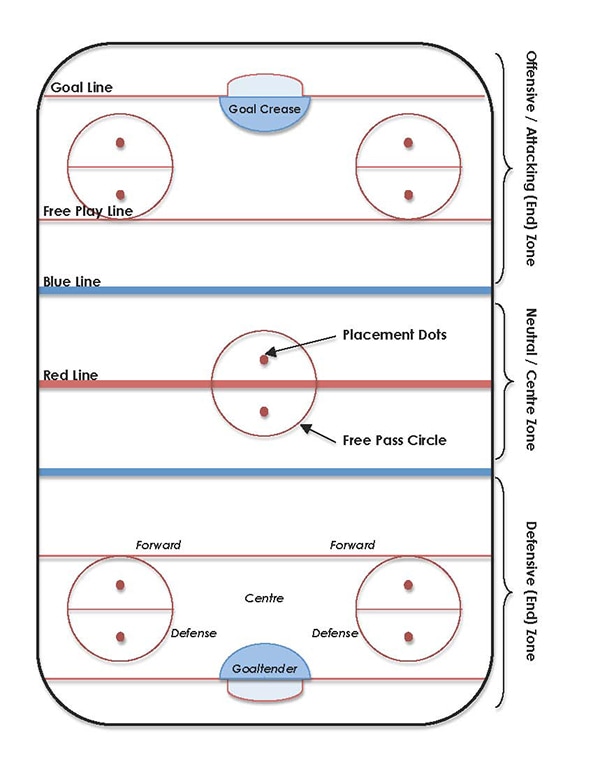
Even though ringette is played on the same ice-surface as hockey, comparable in equipment and numbers, the similarities end there. More similar to basketball, soccer or lacrosse, ringette is a team sport with a different strategy. The rules promote team play so that a single player cannot carry the ring from end to end and score a goal. Teams are usually made up of 11 to 17 players; with six skaters on the ice at the same time (a goalie, two defense, a center and two forwards).
The Game begins much like soccer with the Visiting team being awarded a Free Pass in the Centre Ice Free Pass Circle (known in Hockey or Lacrosse as the Face Off Circles). Free Passes are also ringette’s way of restarting games after penalties, violations,
goals or any other stoppage in the game. Depending on where the play stopped after a violation or penalty, the free pass is
awarded to the appropriate team in the circle closest to where the action ceased. One player takes possession on the whistle
and has five seconds to either shoot or pass the ring to a teammate. The ring must be passed completely out of the circle, and the player cannot skate out of the circle with the ring. No other players are allowed in the Free Pass Circle during the five second count.
Blue Lines - A player cannot carry the ring over a blue line in either direction. The ring must be passed over the blue line to
another teammate. That teammate is permitted to skate ahead of the ring carrier and already be across the blue line
before the ring crosses it.
Goal Crease - If the ring lands in or on the crease, the only player who can touch it is the goalkeeper. The goalkeeper usually picks up the ring and throws it to a teammate. The goalie has five seconds to pass it out of her crease.
Ringette promotes a no-contact policy when it comes to the physical aspect of its game. Penalties are given when a player, intentional or not, makes excessive body contact with another player, checks a player too high on the stick, trips, hits or interferes another player.
The details and further explanation of these rules can be found in Ringette Canada’s Official Rule Book.
The Game begins much like soccer with the Visiting team being awarded a Free Pass in the Centre Ice Free Pass Circle (known in Hockey or Lacrosse as the Face Off Circles). Free Passes are also ringette’s way of restarting games after penalties, violations,
goals or any other stoppage in the game. Depending on where the play stopped after a violation or penalty, the free pass is
awarded to the appropriate team in the circle closest to where the action ceased. One player takes possession on the whistle
and has five seconds to either shoot or pass the ring to a teammate. The ring must be passed completely out of the circle, and the player cannot skate out of the circle with the ring. No other players are allowed in the Free Pass Circle during the five second count.
Blue Lines - A player cannot carry the ring over a blue line in either direction. The ring must be passed over the blue line to
another teammate. That teammate is permitted to skate ahead of the ring carrier and already be across the blue line
before the ring crosses it.
Goal Crease - If the ring lands in or on the crease, the only player who can touch it is the goalkeeper. The goalkeeper usually picks up the ring and throws it to a teammate. The goalie has five seconds to pass it out of her crease.
Ringette promotes a no-contact policy when it comes to the physical aspect of its game. Penalties are given when a player, intentional or not, makes excessive body contact with another player, checks a player too high on the stick, trips, hits or interferes another player.
The details and further explanation of these rules can be found in Ringette Canada’s Official Rule Book.
Equipment
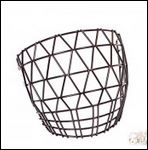
Ringette equipment is almost the same as hockey gear especially in the early years. There are some key differences though.
It can sometimes be hard to find ringette equipment in the Comox Valley and we also understand that new, full price equipment can be expensive for families just starting out in this wonderful sport. So... we have started an equipment rental program! Click here to learn about our equipment rental program.
The association has an online gear swap on facebook. We recommend Blue Toque for second hand gear at a good price and Happy's Source for Sports has a great ringette selection including sticks and face masks. We understand that the cost of gear can be prohibitive when playing an ice sport and we are committed to helping you get on the ice. Please contact us if you need gear or financial support to get your athlete on the ice.
The following is a list of the equipment a ringette player needs to wear while on the ice:
**Players can wear hockey pants with socks instead of a ringette girdle and pants.
It can sometimes be hard to find ringette equipment in the Comox Valley and we also understand that new, full price equipment can be expensive for families just starting out in this wonderful sport. So... we have started an equipment rental program! Click here to learn about our equipment rental program.
The association has an online gear swap on facebook. We recommend Blue Toque for second hand gear at a good price and Happy's Source for Sports has a great ringette selection including sticks and face masks. We understand that the cost of gear can be prohibitive when playing an ice sport and we are committed to helping you get on the ice. Please contact us if you need gear or financial support to get your athlete on the ice.
The following is a list of the equipment a ringette player needs to wear while on the ice:
- CSA approved hockey helmet
- Ringette face mask: the kind with the triangular openings - leave all of the stickers on!
- BNQ approved neck protector
- Elbow pads
- Shoulder pads (U19 division and under)*
- Protective (ie hockey) gloves
- Girdle (hip/tailbone/genital protector)**
- Jill or jock strap if player is using hockey pants
- Shin guards
- Hockey/ringette skates (no picks)
- Ringette pants**
- Ringette stick
- Jersey
**Players can wear hockey pants with socks instead of a ringette girdle and pants.
Ringette equipment can be purchased locally at number of stores:
Happy’s Source for Sports - 256 - 6th Street in Courtenay
Blue Toque Sports Swap (used sporting equipment) - 120 5th St in Courtenay
Economic hockey starter kits are available at Walmart and Canadian Tire for younger children. Be sure to purchase a ringette mask and ringette stick from one of the other vendors listed above or online at ringettestore.com
Happy’s Source for Sports - 256 - 6th Street in Courtenay
Blue Toque Sports Swap (used sporting equipment) - 120 5th St in Courtenay
Economic hockey starter kits are available at Walmart and Canadian Tire for younger children. Be sure to purchase a ringette mask and ringette stick from one of the other vendors listed above or online at ringettestore.com
What Parents Need to Know about Equipment
Sticks
Sticks can NOT be made from broken hockey sticks. Commercial ringette sticks can be bought inexpensively and they have a metal or plastic tip to prevent mushrooming. The maximum length is to the height of the underarm with arm extending 90 degrees to the body standing in skates. Individual players may prefer a shorter stick.
Equipment should be dried after each use. A small cloth should be part of each player’s bag for wiping skates and sticks should be carried so the playing end does not bang on the ground as that damages the tip.
Skates
Skates are the most important as they provide support, mobility and protection. The counter (heel area) and ankle area should be stiff. You can test the heel area by grasping the skate from behind and pinching the two sides together. Twist them – are they soft, limp or pliable? Cheaper skates have cardboard and poor leather in the counter area and when wet or under strain, it will break, crack or soften. The quality of blade determines how often it has to be sharpened, hence, how long it lasts.
When fitting skates, start with one pair of light-weight synthetic socks (cotton socks tend to stick to the skin when wet and cause blisters) and your shoe size. Youth sizes 6 - 13 1/2 , Junior sizes 1 – 6 and Adult sizes 7+. If the skates are too large and you try to take up slack by tightening the laces, the blood circulation will be restricted resulting in cold feet. An ideal fit will place the toe 1/4 inch from the front of the skate. Pretty hard to judge! You can measure this by pushing their foot to the front of the skate. When you can place one finger behind the heel the skate is the right size. The boot should hold the heel ridged like a medical cast. A narrow foot may require leather inserts to take up space in the heel side area. All children have strong ankles but not strong enough for the transition period from shoe to blade. It comes after varying lengths of time. For several years, all children need unyielding ankle support.
To tie the skate, divide it into thirds. The bottom third should be moderate tension (take up slack). The middle third should be slightly looser. The top third needs to be pulled tightly (taking up all loose leather holding the foot firmly). These are relative terms. Good skates will not require bull strength to tie. Do not wrap laces that are too long around the ankle area as it restricts ankle movement. Sizes are not standard. Try them on. Spring is a good time for used equipment. Good skates can be purchased for between $25.00 and $75.00 depending on new, used and sale price. Proper fitting quality skates will improve their skating up to 30%, last for a half dozen children and make skating more fun.
Sticks can NOT be made from broken hockey sticks. Commercial ringette sticks can be bought inexpensively and they have a metal or plastic tip to prevent mushrooming. The maximum length is to the height of the underarm with arm extending 90 degrees to the body standing in skates. Individual players may prefer a shorter stick.
Equipment should be dried after each use. A small cloth should be part of each player’s bag for wiping skates and sticks should be carried so the playing end does not bang on the ground as that damages the tip.
Skates
Skates are the most important as they provide support, mobility and protection. The counter (heel area) and ankle area should be stiff. You can test the heel area by grasping the skate from behind and pinching the two sides together. Twist them – are they soft, limp or pliable? Cheaper skates have cardboard and poor leather in the counter area and when wet or under strain, it will break, crack or soften. The quality of blade determines how often it has to be sharpened, hence, how long it lasts.
When fitting skates, start with one pair of light-weight synthetic socks (cotton socks tend to stick to the skin when wet and cause blisters) and your shoe size. Youth sizes 6 - 13 1/2 , Junior sizes 1 – 6 and Adult sizes 7+. If the skates are too large and you try to take up slack by tightening the laces, the blood circulation will be restricted resulting in cold feet. An ideal fit will place the toe 1/4 inch from the front of the skate. Pretty hard to judge! You can measure this by pushing their foot to the front of the skate. When you can place one finger behind the heel the skate is the right size. The boot should hold the heel ridged like a medical cast. A narrow foot may require leather inserts to take up space in the heel side area. All children have strong ankles but not strong enough for the transition period from shoe to blade. It comes after varying lengths of time. For several years, all children need unyielding ankle support.
To tie the skate, divide it into thirds. The bottom third should be moderate tension (take up slack). The middle third should be slightly looser. The top third needs to be pulled tightly (taking up all loose leather holding the foot firmly). These are relative terms. Good skates will not require bull strength to tie. Do not wrap laces that are too long around the ankle area as it restricts ankle movement. Sizes are not standard. Try them on. Spring is a good time for used equipment. Good skates can be purchased for between $25.00 and $75.00 depending on new, used and sale price. Proper fitting quality skates will improve their skating up to 30%, last for a half dozen children and make skating more fun.
Equipment images from BCRA.
